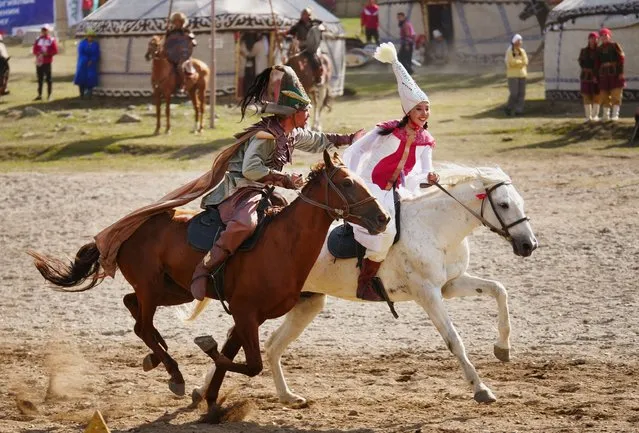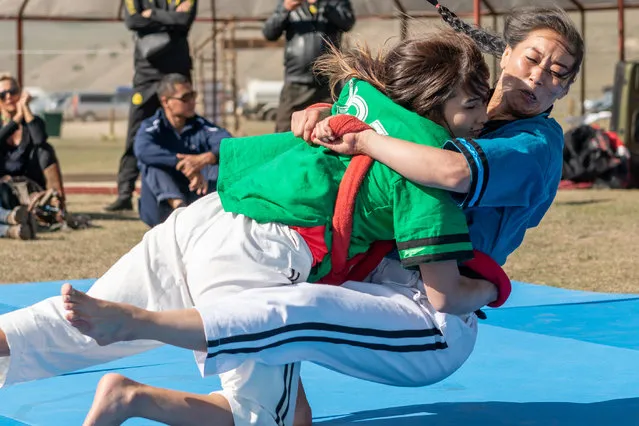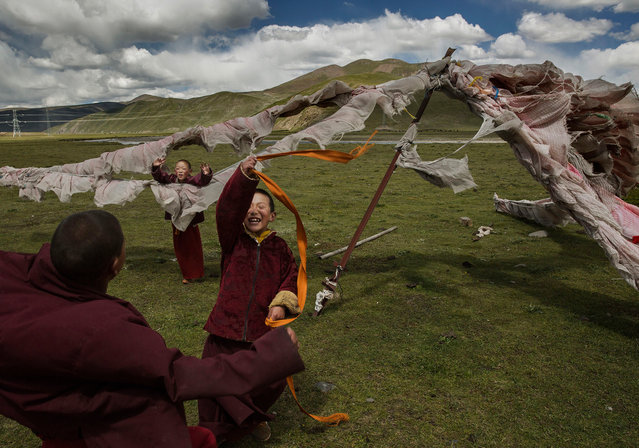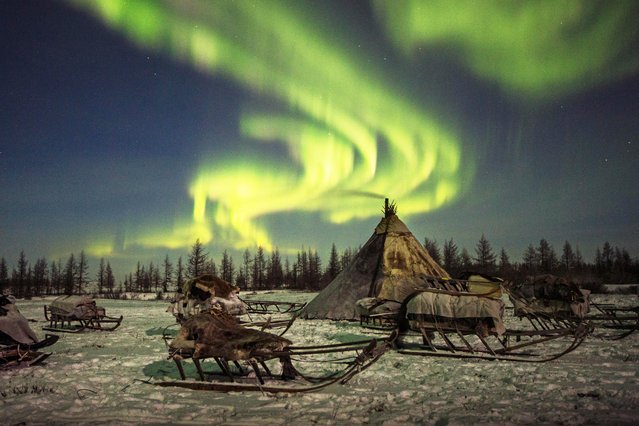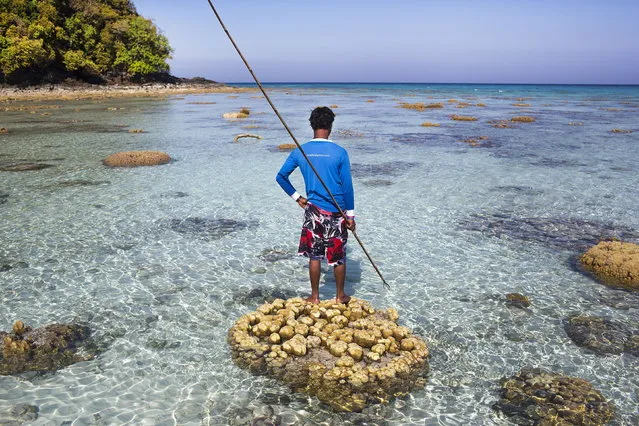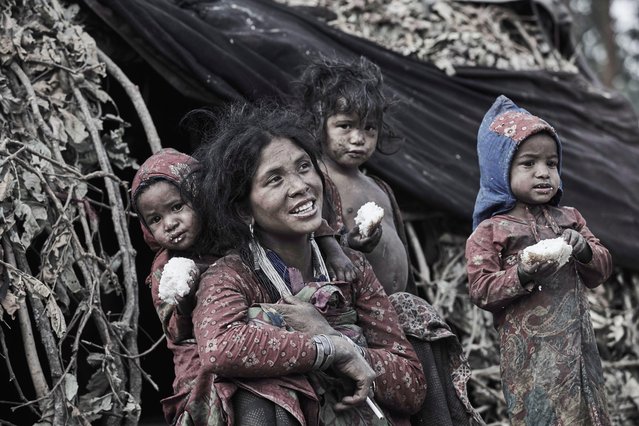
In this photo taken on Sunday, September 4, 2016, a Kyrgyz boy holds a golden eagle during the second World Nomad Games at Issyk Kul lake in Cholpon-Ata, Kyrgyzstan. The Games, which opened on Saturday on a picturesque mountain plain in eastern Kyrgyzstan, bring together athletes from 40 countries including Russia and the United States where nomadic traditions are strong. (Photo by Vladimir Voronin/AP Photo)
07 Sep 2016 10:14:00,post received
0 comments

